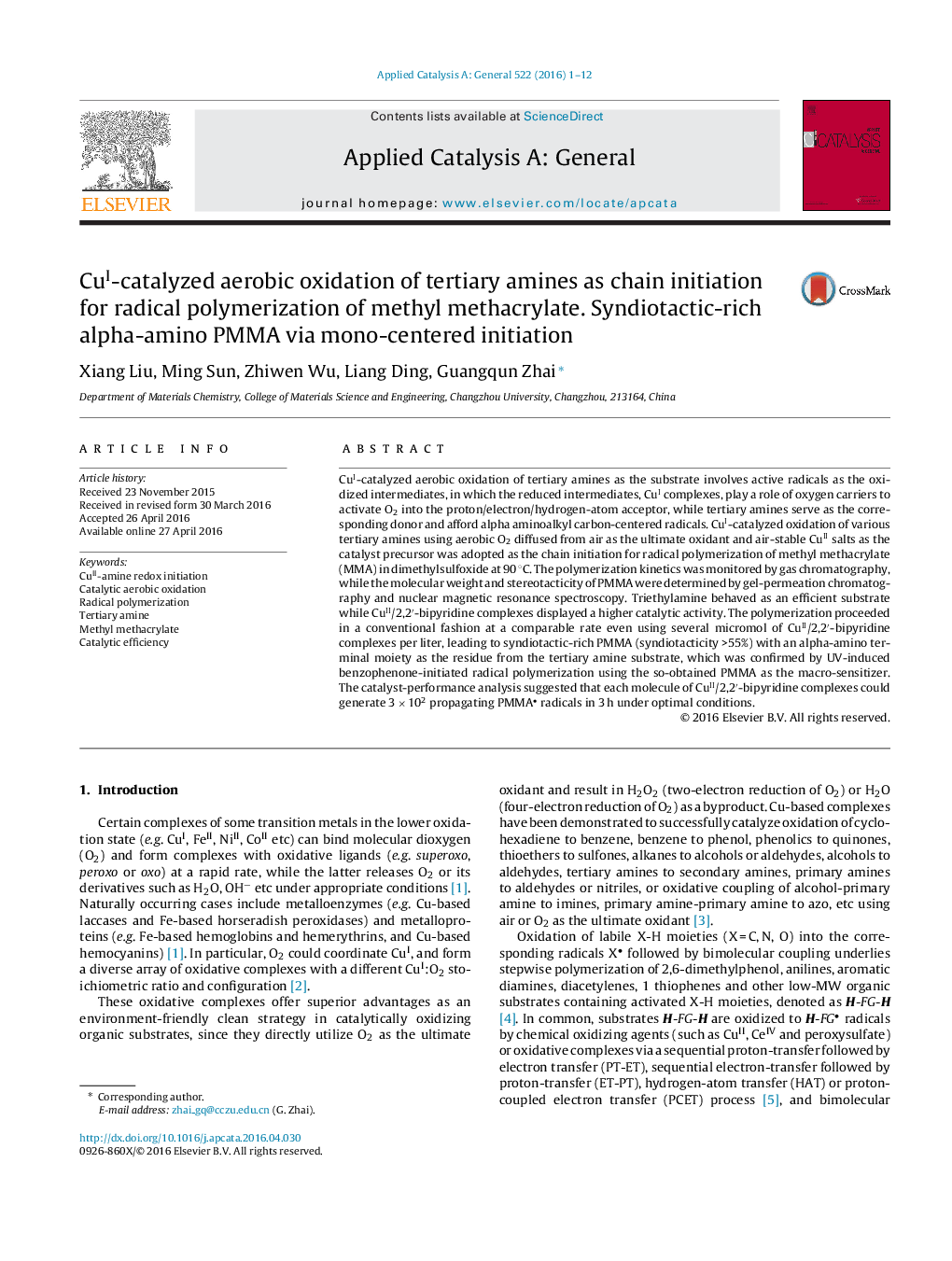| کد مقاله | کد نشریه | سال انتشار | مقاله انگلیسی | نسخه تمام متن |
|---|---|---|---|---|
| 38693 | 45788 | 2016 | 12 صفحه PDF | دانلود رایگان |

• Air-stable CuII/L complexes oxidized tertiary amines into aminoalkyl radicals to initiate polymerization of MMA.
• In-situ generated CuI/L complexes spontaneously formed oxidative complexes with aerobic O2 to continuously oxidize tertiary amines to initiate polymerization.
• Ppm-level CuII/2,2′-biypridine complexes catalyzed polymerization at a moderate rate using triethylamine as the substrate, leading to syndiotactic-rich alpha-amino PMMA.
CuI-catalyzed aerobic oxidation of tertiary amines as the substrate involves active radicals as the oxidized intermediates, in which the reduced intermediates, CuI complexes, play a role of oxygen carriers to activate O2 into the proton/electron/hydrogen-atom acceptor, while tertiary amines serve as the corresponding donor and afford alpha aminoalkyl carbon-centered radicals. CuI-catalyzed oxidation of various tertiary amines using aerobic O2 diffused from air as the ultimate oxidant and air-stable CuII salts as the catalyst precursor was adopted as the chain initiation for radical polymerization of methyl methacrylate (MMA) in dimethylsulfoxide at 90 °C. The polymerization kinetics was monitored by gas chromatography, while the molecular weight and stereotacticity of PMMA were determined by gel-permeation chromatography and nuclear magnetic resonance spectroscopy. Triethylamine behaved as an efficient substrate while CuII/2,2′-bipyridine complexes displayed a higher catalytic activity. The polymerization proceeded in a conventional fashion at a comparable rate even using several micromol of CuII/2,2′-bipyridine complexes per liter, leading to syndiotactic-rich PMMA (syndiotacticity >55%) with an alpha-amino terminal moiety as the residue from the tertiary amine substrate, which was confirmed by UV-induced benzophenone-initiated radical polymerization using the so-obtained PMMA as the macro-sensitizer. The catalyst-performance analysis suggested that each molecule of CuII/2,2′-bipyridine complexes could generate 3 × 102 propagating PMMA radicals in 3 h under optimal conditions.
Figure optionsDownload high-quality image (137 K)Download as PowerPoint slide
Journal: Applied Catalysis A: General - Volume 522, 25 July 2016, Pages 1–12